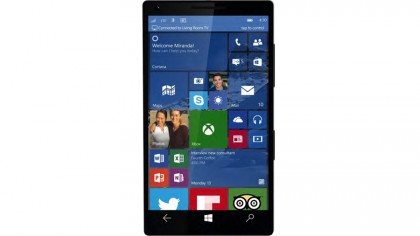Windows 10 and its quest for universal greatness
Back to the Start

As its release edged closer and closer, the full features and details of Windows 10 came into focus. We know, for example, that Windows 10 will mark the end of Windows Media Center, and Music has been replaced by an app called Groove.
July 29th, 2015
On the release date, Windows 10 became available in 190 countries and 111 languages.
Getting laptop, tablet and phone makers ready for the back-to-school (and university) season with fresh copies of the new OS well ahead of time makes absolute sense.
Mobile win
Looking back to the Microsoft's Build developer conference, held in April, which was an opportunity for the company to show developers where it is right now, you can see many of the foundations laid by Microsoft.
On the first day of Build, Myerson surprised the crowd when he announced that Windows 10 Mobile (which still hasn't been released, yet) will support apps written for iOS and Android. With some reworking, of course. Still, this will undoubtedly blow the Windows 10 app store wide open.
So, when Windows 10 Mobile (for phones) launches, you'll be able to run Android apps, for example, on phones and small tablets (but not on a Surface, notebook or desktop PC). They'll run on an Android subsystem that's likely to be based on KitKat (using the same hooks once used to put a POSIX subsystem in Windows NT).

Paranoid Android
But this doesn't mean any Android app will run and there are things they won't be able to do. "We replace the Android services with our own," said Microsoft's Kevin Gallo. "We are running them in our own container – conceptually we are running them as a universal app so we use a middleware layer for translating APIs across, but they still run in the Windows app security model."
Sign up to the TechRadar Pro newsletter to get all the top news, opinion, features and guidance your business needs to succeed!
That will improve performance and battery life over Android, he suggested: "Apps are not running in the background and there are some changes made so they behave like a well-behaved app."
Standard platform capabilities will be redirected to the Windows equivalents – that's the file system, contact and photo integration, camera, sensors and network connections.
Not all Android apps will work well this way. "Messaging apps and those that have deep integration into background tasks will probably have issues running," Gallo told us, "and it also comes down to [where they have good] performance". But then, he pointed out, "not every app works in every Android distribution."
Bringing Android apps to Windows Phones isn't the only way Microsoft is trying to bring developers and their apps to Windows 10. There's also the ability to wrap Win32 and Silverlight apps in the App-V container or to bundle up a website as an app (complete with API calls to add Windows 10 features) and distribute those through the Windows Store – and iOS developers can bring an Xcode project into Visual Studio and share source code between an iOS and Windows app.

Graham is the Senior Editor for AI at TechRadar. With over 25 years of experience in both online and print journalism, Graham has worked for various market-leading tech brands including Computeractive, PC Pro, iMore, MacFormat, Mac|Life, Maximum PC, and more. He specializes in reporting on everything to do with AI and has appeared on BBC TV shows like BBC One Breakfast and on Radio 4 commenting on the latest trends in tech. Graham has an honors degree in Computer Science and spends his spare time podcasting and blogging.